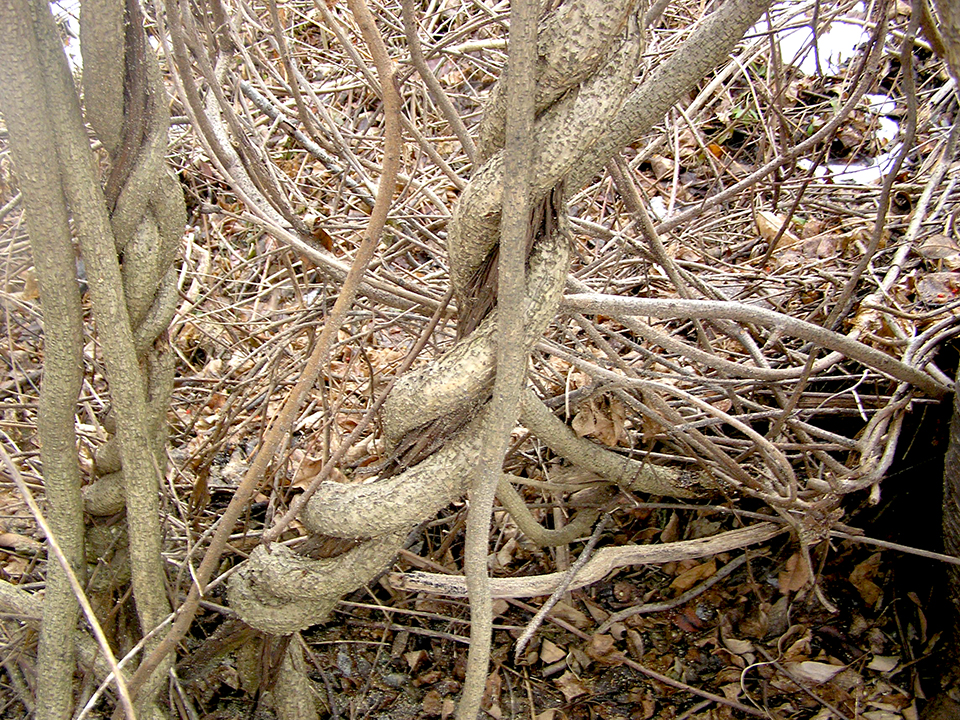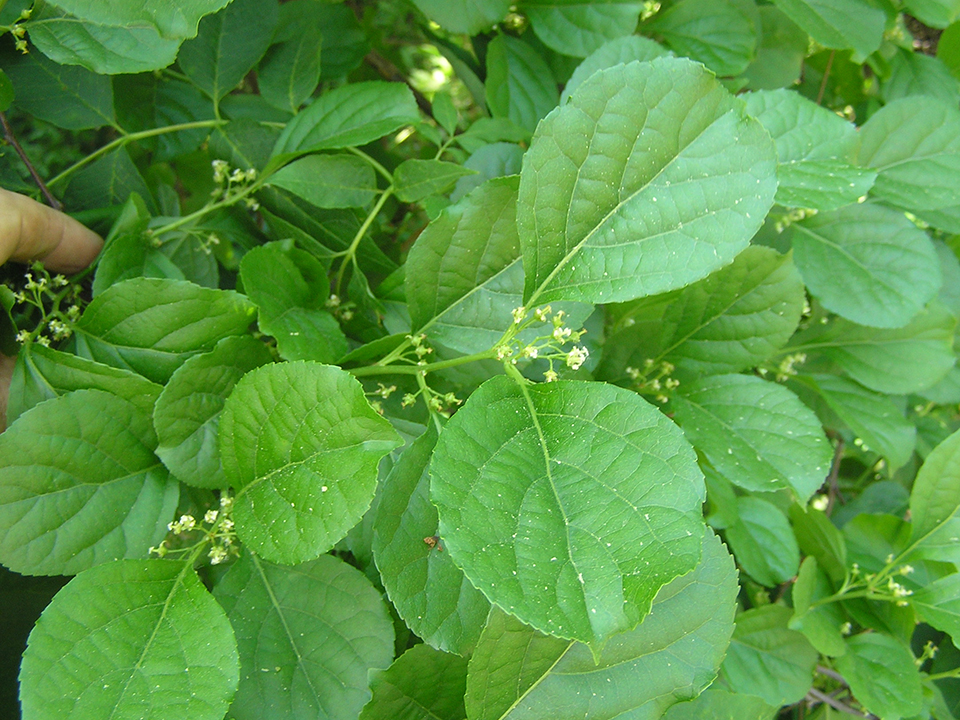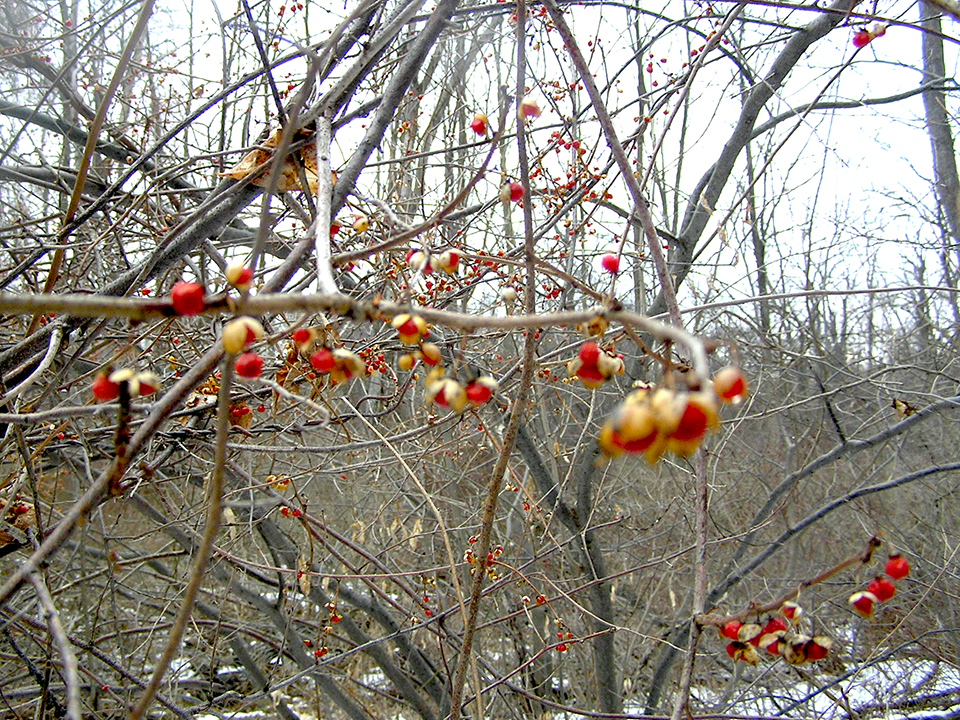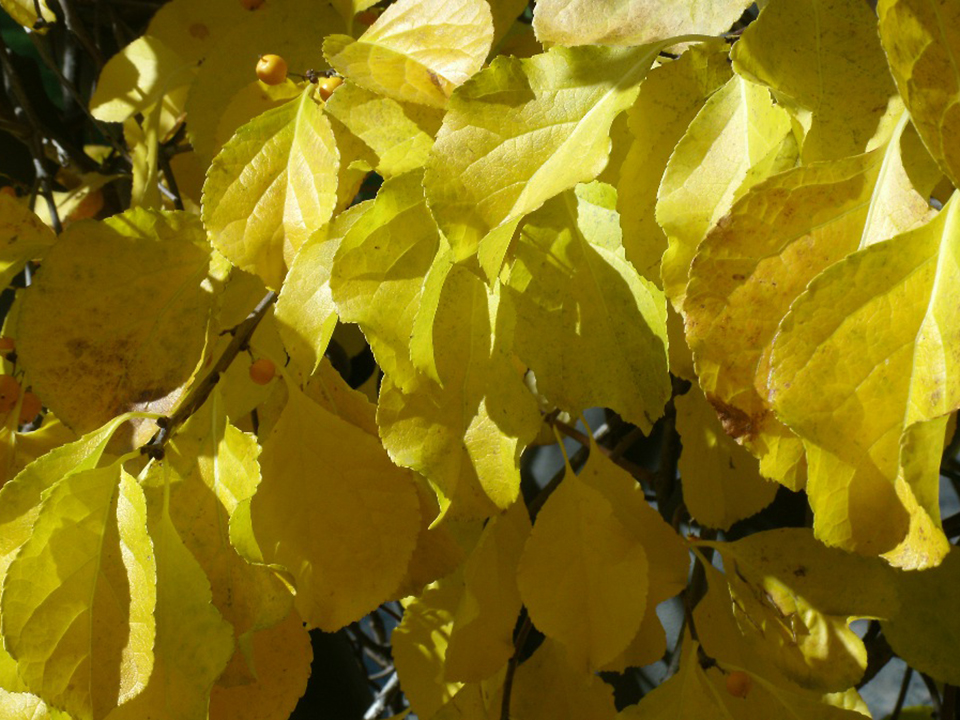Species Name: Celastrus orbiculatus
Common Name: Oriental Bittersweet
Origin: Eastern Asia, Japan, Korea and China
Distribution: Found throughout the eastern US
Identification: Oriental bittersweet is a climbing twining vine. It climbs by spiraling clockwise around its host plant. The bark on young stems is reddish brown on older vines is a silvery gray color. The vines are roundish in cross section. The plant produces 3 bright orange/red fruits inside a yellowish 3 part capsule. Fruits are very diagnostic.
The plant is dioecious with separate male and female plants.
Diagnostic characteristics: Oriental bittersweet spirals around its host plant. Most other vines such as grape vine, Virginia creeper and poison ivy do not. Any spiraling vine should be considered suspect and determined whether it is OB.
Bark of bittersweet is a uniformly light gray color unlike most other vines.
Fruits are bright orange and emerge from pea sized yellow capsules in fall. The fruits are an easy identification feature. Oriental bittersweet produce fruits in the axil of each leaf compared to American bittersweet which produces fruits only at the growing tip of each vine.
Fall color is another easy field mark for spotting bittersweet. In fall as native plants begin to turn color look for the characteristic lemon yellow color of the foliage. Small vines and new infestations are easy to locate and eradicate at this time of year.
Biology and Spread: Bittersweet is an aggressive invasive plant because of its ability to climb up, over and around any structure or plant in its way. In forests it spirals around trees and saplings for support. As the vine grows in diameter it prevents the tree from expanding as well, which distorts the natural growth of the tree. Over time the weekend tree may break from the weight of the vine, wind or snow loads. In open areas bittersweet climbs over and through the vegetation smothering everything underneath. This halts natural succession and prevents forest regeneration.
Ecological threats: Oriental bittersweet is a serious threat to all plant communities where it is found. Once established only human intervention will prevents its eventual domination of the site. OB does not like shade but it will continue too live in shade until an opportunity allows more sunlight to reach it or until it grow up into the light where it can outcompete its host. In forested environments OB prevents regeneration of young trees and eventually will kill even mature trees
Control methods:
1) Cut Stump Treatment:
Cut medium to large bittersweet vine as near to the main root system as possible. The vine above the cut will die without any further treatment. Treat the cut surface of the vine above the root system with a 10% to 15% solution of glyphosate (the active ingredient in Round-up). A hand held spray bottle works well for applying the herbicide to the cut stem. Add a spray colorant to the bottle so you can tell which stems have been treated.
Smaller vines may be cut near the ground and treated with herbicide or the roots pulled up by the stem. The roots may be pulled in some cases and some soils such as in sand, loamy soils and in shade. In clay soils and where there are other plant roots it may be necessary to treat with a herbicide.
2) Foliar treatments
Where bittersweet is growing in full sun and carpeting the ground or where there are too many small intertwining vines it may be more efficient to treat the foliage with glyphosate. Wait until mid to late summer. Spray the foliage thoroughly with herbicide. Wait a week or two and then evaluate whether to retreat any missed plants.
Follow up treatments and monitoring will be needed in subsequent years to control new seedlings and missed plants.

Oriental bittersweet stems spiraling around itself and anything it comes in contact with. Any vine that wraps itself around its support should be considered suspect
and determine whether it is Oriental bitterseet or not. Control the vine by cutting the vine off at ground level and then treating the cut surface with Roundup.

Flowers of oriental bittersweet emerge from the axil of each leaf along the entire vine. American bittersweet flowers are only produced at the end of each vine.

Bittersweet fruit are enclosed in a 3 part yellow pod that opens reavealing the orange fruit inside .

The lemon yellow fall color is an easy way to scout for bittersweet in the fall. The bright color stands out from all other plants in the fall.


